A Pesach-themed piece I wrote for the Boston Globe can be read here.


A Pesach-themed piece I wrote for the Boston Globe can be read here.
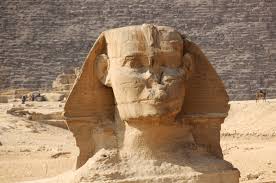
Ours are times when it isn’t hard to imagine oneself as a Jew in Mitzrayim – at least according to the way two commentaries understand a word in Devarim.
The word is in one of the pesukim comprising the declaration to be made by those bringing bikurim, the firstfruits of the season, to the Beis Hamikdash. It is, famously, a declaration that the Haggadah expands upon. The word is vayarei’u, often translated as “they [the Mitzri’yim] treated us in an evil way” (26:6).
Abarbanel and the Netziv, however, see the syntax of the word as implying something subtly but decidedly different. They read it as meaning “they ‘eviled’ us” – in other words, they portrayed the descendants of Yaakov as evil. As we would say in English, they vilified us.
Could there be a better way to describe so much of the world’s attitude toward Jews today? To be sure, there are always haters who, as is their wont, hate, for any of an assortment of “reasons” or with no attempt at “justification” at all; that’s nothing new.
But, as a result of civilian casualties in Gaza – unavoidable deaths and injuries like those that have been part of every war in history – Israel has been vilified to an unprecedented extent, not only by the usual suspects but in broad international circles and media. And, tellingly, all Jews – as Jews, simply for being Jews, our opinions unknown and of no concern to the venomous vilifiers – are targeted as well.
Attacks on Jews, physical and verbal, abound across the globe. The despicable chants of “Burn the Jews!” and displays of Nazi symbols at “pro-Palestinian” rallies – a British bobby was recently recorded dismissing a distraught Jewish woman’s complaint about swastika flags at a demonstration by saying they needed to be “taken into context” – is evidence enough of how easily empty-headed people can, under the self-righteous guise of what they proffer as principled political positions slide into… vilification of Jews.
And so it’s no great challenge this year to put ourselves in the places of our vilified ancestors in Mitzrayim. The Haggadah’s mandate that we endeavor to see ourselves as if we, too, were redeemed from Mitzrayim logically includes imagining ourselves in the state that our forebears endured before they went free. After all, an appreciation of redemption must include what it has freed one from.
Although we refer to the splitting of the Red Sea as kri’as Yam Suf, a “tearing” of the waters, that word is not used by the Torah. The Torah’s word for the parting of the waters is vayibak’u – “splitting” or “chopping.”
Noting the use of the same verb to describe Avraham Avinu’s splitting of wood for use in the offering of Yitzchak as an olah to Hashem, Chazal tell us that it was in the merit of that action of Avrohom’s that the sea was able to split.
What was the essence of that merit? It’s more than plausible that it was the perseverance in the face of hopelessness, the selfless determination with which Avraham undertook to follow Hashem’s unfathomable command. Our forefather’s deepest desire lay in a world-changing future for Yitzchak and his eventual descendants. But, it seemed, in light of the command, that there was no hope left to be hoped.
Similarly, when Klal Yisrael found itself faced with a sea before them and an approaching army closing in from behind, hopelessness would understandably have seized them.
And yet, just as the despair Avraham had reason to feel as he split wood for the akeida was later dissipated in a crucial instant, so did the anguish our ancestors experienced at the sea suddenly evaporate, as they watched the waters before them part.
It’s a thought worth pondering these days. Even surrounded by darkening clouds of seemingly mindless, relentless hatred, we do well to remember how hopelessness needn’t be final.
The Egyptian pyramids and the Sphinx, intended to herald the permanence of the power of an ancient dynasty, are today nothing more than tourist attractions, and crumbling ones at that. Our people persists, vibrant and hopeful, looking toward the ge’ulah sheleimah.
© 2024 Ami Magazine
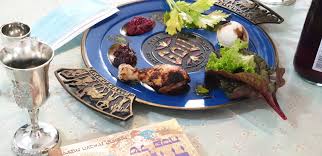
Anyone interested in a 54-page compendium of Pesach-themed articles I have written over the years is invited to request one (no charge) at rabbiavishafran42@gmail.com .
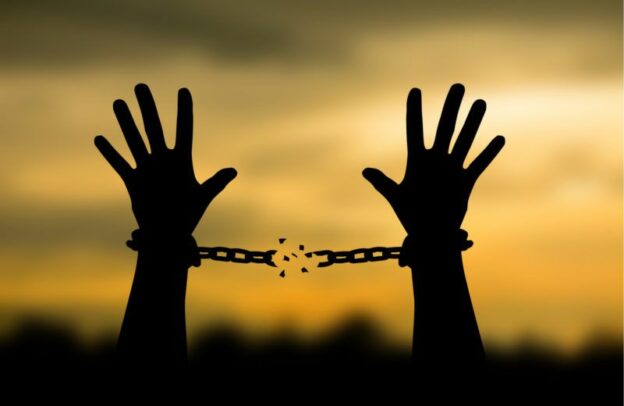
Kol yimei chayecha – “All the days of your life” – is a phrase we first meet in the Torah when Hashem pronounces the fate of Adam after the sin of eating from the eitz hadaas: “Cursed is the ground because of you. Through suffering will you eat from it all the days of your life” (Beraishis 3:17).
The phrase recurs in a seemingly unrelated context, about the mitzvah of eating matzah on Pesach, in our parsha: “…so that you will remember the day you left Egypt all the days of your life” (Devarim 16:3).
That pasuk, cited in the Haggadah, elicited a novel thought from Rav Avrohom, the first Rebbe of Slonim: “When recounting Yetzias Mitzrayim, one should remember, too, ‘all the days’ of his own life – the miracles and wonders that Hashem performed for him throughout…”
The generation before mine, the one that came of age during the Second World War, could well relate to that idea. My father endured years of forced labor in Siberia, courtesy of the Soviet Union. My father-in-law was a veteran of several concentration camps, and suffered the deprivations and tortures for which they are infamous.
And, I know, on Pesach, thoughts of their experiences were in their minds. My father and his friends pocketing and then hiding a few wheat kernels here and there, to be secretly ground and baked in the middle of the night into matzos. My father-in-law, in a Dachau satellite camp, reciting with a friend parts of the Haggadah they knew by heart.
But the Slonimer Rebbe’s thought is appropriate for every life, even lives of relative calm and plenty like our own. Because, as a result of the sin of the eitz hadaas, adversity and tragedy entered the world and came to define all humans’ lives, to one or another extent. We all have experienced things that were daunting or worse, and from which we were saved. We may not have been liberated from a literal gulag or camp, but we are all, on one or another level, survivors.
And we need to consciously recall that fact, all the days of our lives.
© 2023 Rabbi Avi Shafran

Rosh Chodesh Nisan would seem a propitious time for a Kiddush Hashem. And one occurred this year, when a large group of Israeli anti-government protesters, mostly secular citizens aiming to “get in the face” of religious Jews, descended on Bnei Brak.
They likely wanted to express their anger at the fact that religious parties are part of the government coalition whose plans outrage them, but also to stoke locals’ anger in return. Many protesters wore helmets in anticipation of barrages of rocks or eggs. None, though, materialized, only a handful of young people who shot off harmless fireworks.
What did happen, though, was that some local residents set up food and drink stands, offering the protesters cholent, cookies and bottles of water, which many of the visitors gratefully accepted.
And, in one widely circulated (I prefer to avoid the word “viral” these days) video clip, some of the demonstrators seemed moved when the niggun “Sholem Aleichem” was played on loudspeakers. One older man was filmed taking off his helmet to wipe tears from his eyes as he mouthed along with the Shabbos night welcoming of malachei hashareis. Another protester excitedly accepted a sefer Torah from a resident and danced with it.
A resident who filmed videos of the unexpected happenings said that the man who removed his helmet and wept looked at her and said, “My father had love for every Jew and wanted everyone to be united. My father would roll over in his grave if he could see the hatred and conflicts among us.”
There are, to be sure and tragically, people who are so hardened in their secularism that they may seem impervious to reconsidering assumptions about Torah or those dedicated to it.
But the pinteleh Yid is always there, ready to be awoken.
After the Torah recounts the question that the Haggadah attributes to the rasha, it describes our ancestors as bowing down in thanksgiving about, Rashi says, the “news of the children.”
The Sheim MiShmuel, quoted in Eliyhu Ki Tov’s Haggadah, explains that, while resha’im in Mitzrayim perished, after yetzias Mitzrayim our ancestors were given the news that all of their descendants – no matter their actions as individuals – would still be part of the Klal. And that was what spurred their display of gratitude.
And the import of that news is that, no matter how far from their spiritual roots Jews wander, there is always a possibility of them finding – as so many have – a path home.
The seder is a particularly powerful puller of Jewish souls. Its memory is indelibly etched in many a less observant Jew’s soul.
My father, a”h, served as rov of a shul attended by both observant and non–observant Jews. One day a man came to Shacharis – to say Kaddish for a yahrtzeit – one of the few occasions we ever saw him – and received an aliyah.
He haltingly recited the brachah on the Torah but after “Asher bachar banu…” he hesitated. Then “mikol…” Then, to my immature amusement, “…haleylos shebechol haleylos anu ochlim…”
He was quickly corrected. But I realized that the man had just revealed that, distant as he was from Yiddishkeit, he remembered Mah Nishtana.
The distance between him and his heritage could not keep its words from tiptoeing in, unsummoned but determined. The seder was a part of him.
When living in Northern California and then in Rhode Island, I became acquainted with many Jewish families seemingly devoid of religious practice. I always made a point of asking whether they had a seder of any sort. Almost invariably, the answer was… yes, of course. Their sedarim may not have met halachic standards, but they were born of older sedarim that had, and that had left their seeds in the hearts of those present to germinate.
The sheer variety of bizarre “haggadahs” out there itself testifies to the Jewish compulsion to connect, no matter how tenuously, the “ism” du jour to Yetzias Mitzrayim. Forgetting that seminal event simply isn’t an option.
The birds of spring are singing. So are we Jews, singing our history at our sedarim. And even some who have fallen from the nest vaguely remember the song. We just need to refresh their memories.
© 2023 Ami Magazine
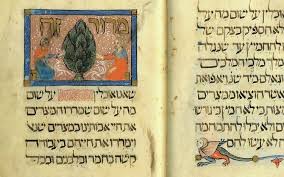
A piece adapted from an essay to be included in a Haggadah due to be released next year, appears at Religion News Service, here.
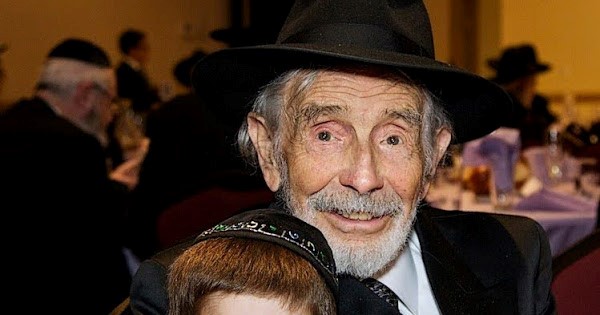
“Second Passover,” or Pesach Sheini, a minor Jewish holiday, is anything but minor in my family. It was on that Jewish date, which, in 1945, fell on April 27 (and this year, falls on May 15), that my late father-in-law, the late Yisroel Yitzchok Cohen, was liberated by American forces from Kaufering, part of the concentration camp complex known as Dachau.
In biblical times, Pesach Sheini, coming a month after Pesach, was a day on which Jews who were unable for various reasons to bring the korban Pesach, or paschal sacrifice, on Pesach had another opportunity to do so, and to eat its meat along with matzos (unleavened bread), and bitter herbs. For my father-in-law, it became a symbol of his own “second chance” — at life. His happy one as a child in the Polish city of Lodz had been rudely interrupted by the Nazis on September 8, 1939.
Mr. Cohen became a teenage inmate of several concentration camps. On Pesach Sheini in 1945, he and a friend, Yossel Carmel, lay in Kaufering, in a corpse-filled pit, where they had been cast by their captors, who thought them dead.
Over recent days, there had been rumors that the camp’s commanders had been ordered to murder all the prisoners, to deprive the advancing Allied armies of living witnesses to their work.
The friends’ fear, though, was leavened by hope, born of the sound of explosions in the distance. “We prayed,” he later wrote, that “the thunderous explosions would go on forever.” The pair, he recalled, “eventually fell asleep to the beautiful sound of the bombs.”
The only moving things in the camp were shuffling, emaciated “musselmen,” the “walking skeletons” who had been rendered senseless by starvation and trauma. And so the pair wondered if, perhaps, the camp guards had abandoned the premises. Alas, though, the S.S. returned, bringing along prisoners from other parts of the camp complex, who were kicked toward waiting wagons and, quite literally, thrown onto them.
But, when no one was looking, the two inmates managed to climb down from where they had been cast and found new refuge in a nearby latrine. “Our stomachs,” he recalled, “were convulsing.”
Eventually the wagons left, and the two young men crept back into their cellblock, posing again, not unconvincingly, as corpses.
Then they smelled smoke. Peeking out from their hiding place, the young men saw flames everywhere. Running outside, the newly resurrected pair saw German soldiers watching a barracks burn, thankfully with their backs toward them. There were piles of true corpses all around, and the two quickly threw themselves on the nearest one that wasn’t aflame.
My future father-in-law thought it was the end, and wanted to recite the “final confession” that Jewish liturgy suggests for one who is dying. But his friend reminded him of an aphorism the Talmud ascribes to Dovid Hamelech, King David, that “Even with a sharp sword against his neck, one should never despair of Divine mercy.”
And that mercy, at least for them, arrived. Every few minutes, bombs whistled overhead, followed by fearsome explosions. The earth shook, but each blast shot shrapnel of hope into their hearts. The Germans now really seemed gone for good.
Dodging the flames and smoldering ruins, the pair ran to the only building still intact, the camp kitchen. There they found a few others who had also successfully hidden from the Nazi mop-up operation.
And they discovered a sack of flour. They mixed it with water, fired up the oven and baked flatbreads. My father-in-law, who, throughout his captivity, had kept careful note of the passing of time on the Jewish calendar, knew it was Pesach Sheini. And the breads became their matzos. No bitter herbs were necessary.
The door flew open and another inmate rushed in breathlessly, finally shouting: “The Americans are here!”
A convoy of jeeps roared through the camp. American soldiers approached the barracks, some, Mr. Cohen recalled, with tears streaming down their faces at the sight of the piles of blackened, smoldering skeletons.
“Along with the American soldiers,” he wrote, “we all wept.”
And then he recited the Jewish blessing of gratitude to God for “having kept us alive and able to reach this day.”
Eventually, Mr. Cohen made his way to France, where he cared for and taught Jewish war orphans; and then to Switzerland, where he met and married my dear mother-in-law, may she be well. The couple emigrated to Toronto and raised five children. For decades thereafter, each Second Passover, he and others who had been liberated from Kaufering that day, along with other camps’ survivors, would arrange a special meal of thanksgivingin Toronto or New York, during which they shared memories and gratitude to God.
As the years progressed, however, sadly but inevitably, fewer and fewer of the survivors were in attendance. And, like his friend Mr. Carmel, Mr. Cohen is no longer with us.
But his wife, and my wife and her siblings, along with scores of grandchildren and great-grandchildren, spread across several states, Canada and Israel, gather in groups, in person or virtually, every Pesach Sheini to recall his ordeals and his liberation, the “second life” we are so grateful he was granted by God.
Many are survivors today, of hateful violence, again against Jews in Israel, as well as other people in places like Sudan, Myanmar, Yemen, Europe and Ukraine. Despair is a natural reaction to witnessing such evil. But those who, like my father-in-law — and my own father, who spent the war years in a Soviet labor camp in Siberia — persevered and created new post-trauma lives show that pasts needn’t cripple futures.
That, like in the case of Pesach Sheini, we can be graced with second chances.

It’s intriguing. Three words are used to refer to Yetzias Mitzrayim (yetziah, geirush and shilu’ach; see, for examples, Shemos, 20:2, 11:1 and 8:17).
And they are the very same words used as well to refer to… divorce (see Devarim 24:2, 24:1 and Vayikra 21:7).
The metaphor seemingly hinted at by that fact is that Klal Yisrael became “divorced” from Mitzrayim, to which it had been, in a way, “married,” a reflection of our descent there to the 49th level of spiritual squalor.
But the apparent “divorce” of Klal Yisroel from Mitzrayim is followed by a new metaphorical matrimony. Because that is the pointed imagery of the event that, mere weeks later, followed Yetzias Mitzrayim: ma’amad Har Sinai.
Not only does Rashi relate the Torah’s first description of a betrothal – Rivka’s – to that event (Beraishis 24:22), associating the two bracelets given her by Eliezer on Yitzchok’s behalf as symbols of the two luchos, and their ten geras’ weight to the aseres hadibros. And not only does the navi Hoshea (2:21, 22) describe Mattan Torah in terms of betrothal (vi’airastich li…, familiar to men as the pesukim customarily recited when wrapping tefillin on our fingers – and to women, from actually studying Nevi’im).
But our own chasunos themselves hearken back to Har Sinai: The chuppah, say various seforim hakedoshim, recalls the mountain, which Chazal describe as being held over our ancestors’ heads; the candles traditionally borne by the parents of the chosson and kallah are to remind us of the lightning at the revelation; the breaking of the glass, of the breaking of the luchos.
In fact, the bircas eirusin itself, the essential blessing that accompanies a marriage, seems as well to refer almost explicitly to the revelation at Har Sinai. “Blessed are You, Hashem, … Who betrothed His nation Yisroel through chuppah and kiddushin” – “al yidei” meaning precisely what it always does (“through the means of”) and “mekadesh” meaning “betroth,” rather than “made holy” like “mekadesh haShabbos”).
The metaphor is particularly poignant when one considers the sole reference to divorce in the Torah.
It is in Devarim (24, 2) and mentions divorce only in the context of the prohibition for a [female] divorcee, subsequently remarried, to return to her first husband. The only other “prohibition of return” in the Torah, strikingly, is the one forbidding Jews to return to Mitzrayim (Shmos 14:13, Devorim, 17:16). Like the woman described in Devarim, we cannot return, ever, to our first “husband.”
More striking still is the light thereby shed on the confounding Gemara on the first daf of massechta Sotah.
The Gemara poses a contradiction. One citation has marriage-matches determined by Divine decree, at the conception of each partner; another makes matches dependent on the choices made by the individuals – “lifi ma’asov” – “according to his merits.”
The Gemara’s resolution is that the divine decree determines“first marriages” and the merit-based dynamic refers to second ones.
The implications, if intended as such regarding individuals, are, to say the least, unclear. But the import of the Gemara’s answer on the “national” level – at least in light of the Mitzrayim/Har Sinai marriage-metaphor – provide a startling possibility.
Because Klal Yisroel’s first “marriage,” to Mitzrayim, was indeed divinely decreed, foretold to Avrohom Avinu at the Bris Bein Habesorim (Bereishis 15:13): “For strangers will your children be in a land not theirs, and [its people] will work and afflict them for four hundred years.”
And Klal Yisroel’s “second marriage,” its true and permanent one, was the result of the choice Hashem made – and our ancestors made, by refusing to change their clothing, language and names even when still in the grasp of Mitzri society and culture – and their willingness to follow Moshe into a dangerous desert. And, ultimately, when they said “Na’aseh vinishma,” after which they received their priceless wedding ring under the mountain-chuppah of Har Sinai.
And a fascinating coup de grâce: The Gemara in Sotah referenced above describes the challenge of finding the proper mates. Doing so, says Rabbah bar bar Ḥana in Rabi Yoḥanan’s name, is kasheh k’krias Yam Suf – “as difficult as the splitting of the Sea.”
© 2022 Ami Magazine

Four questions. Four sons. Four expressions of geulah. Four cups of wine. Dam (=44) was placed, in Mitzrayim, on the doorway (deles, “door,” being the technical spelling of the letter daled, whose value is four).
Moving fourward – forgive (fourgive?) me! – Why?
The chachamim who formulated the Haggadah intended it to plant important seeds in the hearts and minds of its readers – especially its younger ones, toward whom the Seder is particularly aimed.
All its “child-friendly” elements are not just to entertain the young people present but more so to subtly plant those seeds. Dayeinu and Chad Gadya and Echad Mi Yodea are not pointless; they are pedagogy.
There are riddles, too, in the Haggadah. Like the Puzzle of the Ubiquitous Fours.
The most basic and urgent concept the Seder experience is meant to impart to young Jews is that Yetzias Mitzrayim forged something vital: our peoplehood. It, in other words, created Klal Yisrael.
Each individual within the multitude of Yaakov Avinu’s descendants in Mitzrayim rose or fell on his or her own merits. And not all of them. Chazal teach us, merited to leave. Those who did, though, were reborn as something new: a people.
And so, at the Seder, we seek to instill in our children the realization that they are not mere individuals but rather parts of a nation unconstrained by geography, linked by history, destiny and Hashem’s love.
Thus, the role we adults play on Pesach night is precise. We are teachers, to be sure, but we are communicating not information but identity. Although the father may conduct the Seder, he is not acting in his normative role as teacher of Torah but rather in something more like a maternal role, as a nurturer of neshamos, an imparter of identity. And thus, in a sense, he is acting in a maternal role.
Because not only are mothers the parents who most effectively mold their children, they are the halachic determinant of Jewish identity. A Jew’s shevet follows the paternal line, but whether one is a member of Klal Yisrael or not depends entirely on maternal status.
The Haggadah may itself contain the solution to the riddle of the fours. It, after all, has its own number-decoder built right in, toward its end, where most books’ resolutions take place. After all the wine, we’re a little hazy once it’s reached, but it’s unmistakably there, in “Echad Mi Yodea” – the Seder-song that provides Jewish number-associations.
“Who knows four?…”
© 2022 Rabbi Avi Shafran
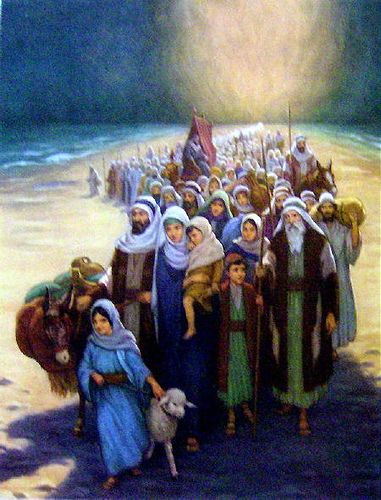
Shalach, the root of the word of the parshah’s title, is used elsewhere regarding the exodus from Mitzrayim (e.g. shalach es ami). So are the words yetziah (e.g. Shemos, 20:2) and geirush (e.g. ibid 11:1)
Intriguingly, each of those characterizations of our ancestors’ march from Egypt is also associated with… divorce. Vishilcha mibeiso (Devarim 24:2); viyatz’ah mibeiso (Devarim 24:1); isha gerushah(Vayikra 21:7).
The metaphor telegraphed by that fact is clear. Klal Yisrael was virtually “married” to Mitzrayim, sunken to near its deepest level of tum’ah, and, with Hashem’s help, freed from that “marriage,” divorced, as it were, from Mitzrayim.
The symbolism doesn’t stop there. When the divorce is finalized, Klal Yisrael gets re-married, this time, permanently, to Hashem, with Har Sinai over the people’s heads serving as a chupah. (Indeed, several marriage customs are associated by various sources with Mattan Torah – the chupah, the candles, reminiscent of the lightning), even the breaking of a glass, recalling the sheviras haluchos).
And that would dovetail strikingly with the prohibition against returning to live in Egypt (Devarim 17:16). Because a remarried woman, too, is prohibited from returning to her first husband (Devarim 24:4).
Even more interesting is the implication of the metaphor to the baffling Gemara in Sotah (2a) that asserts that a man’s “initial mate” is divinely decreed before his birth; and his second one, in accord with his behavior.
Because, in our metaphor, Klal Yisrael’s first “mate,” Egypt, was in fact decreed, to Avraham at the bris bein habisarim; and its final one, Hashem, was earned by the people’s behavior: their willingness to follow Moshe into the desert and declaration of naaseh vinishma at Sinai.
And a coup de grâce lies in how the Gemara paraphrased above describes the challenge of finding the proper mates: kasheh k’krias Yam Suf – “as difficult as the splitting of the Sea.”
© 2022 Rabbi Avi Shafran